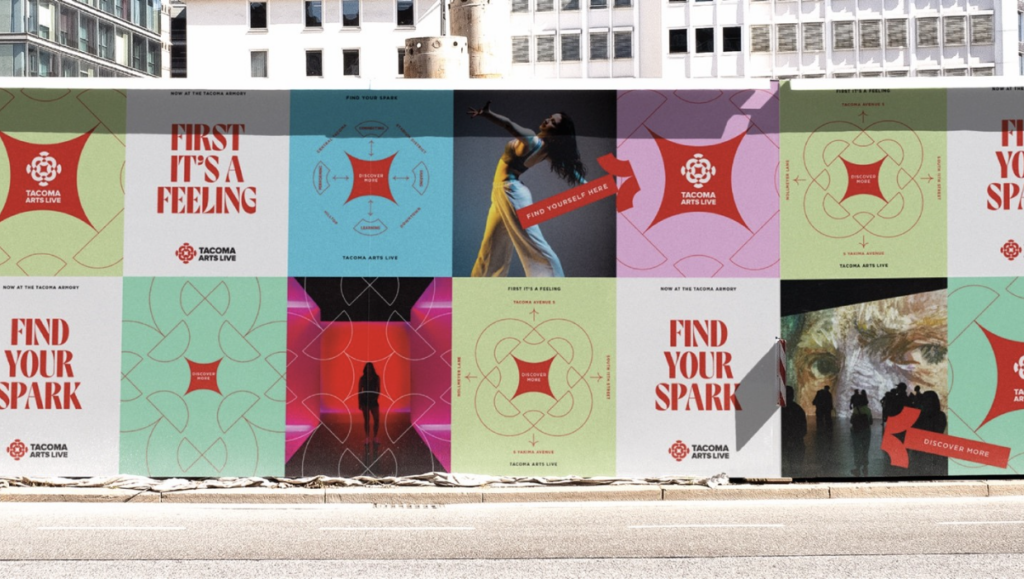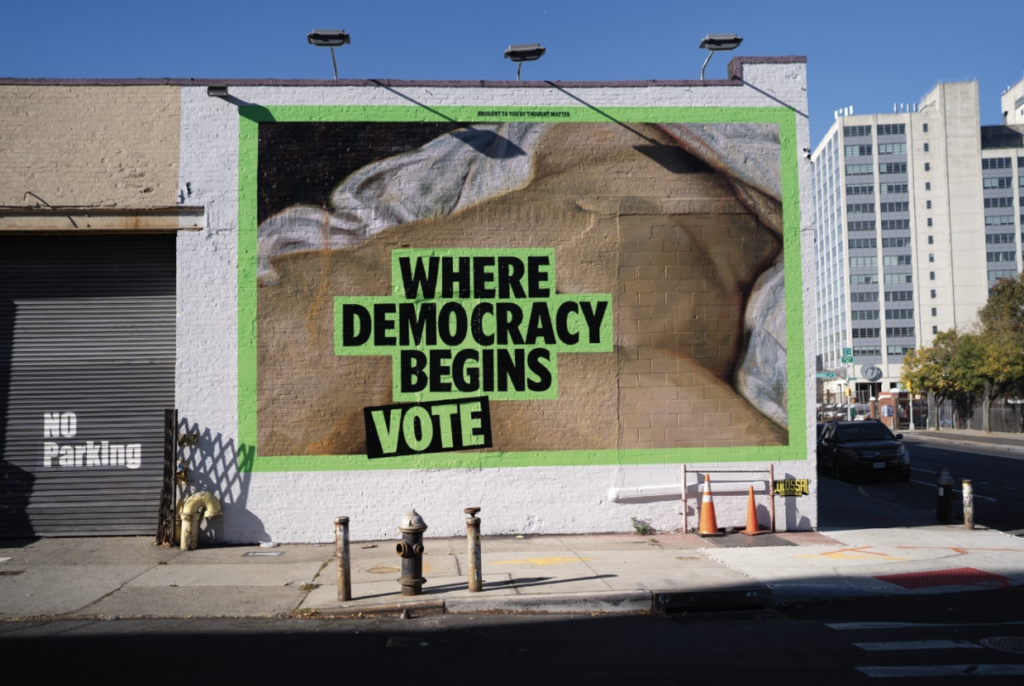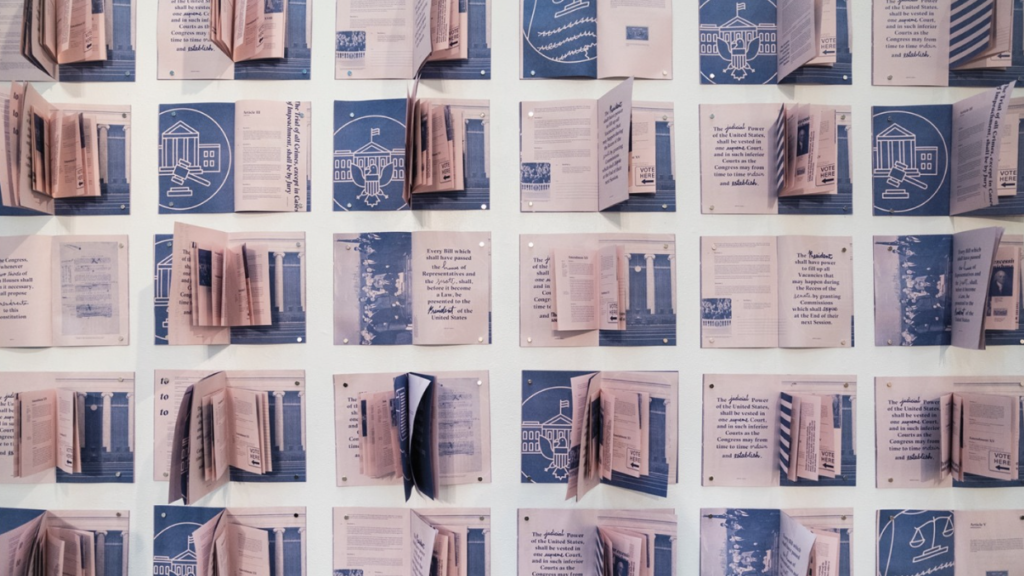Designing The World We Want To Live In

In a chaotic world, we believe design has the power to redefine the narrative, connect people, and drive real, unapologetic change. For us at ThoughtMatter, design is a tool that ignites movements, challenges power structures and inspires critical conversations to create a future full of possibilities.
ThoughtMatter, at its core, is a design studio where art, strategy, and creativity come together to make ideas tangible. For the past decade, we’ve built work that makes a statement, forcing ourselves and our clients to stop and think about the world around us. As our world continues to face crises that are far from abstract, we’ve been planning and designing with defiance, hope, and an unrelenting commitment to shaping a future that isn’t just different but refuses to settle for convenience or compromise.
 Defiance Meets Hope
Defiance Meets Hope
The creative industry is constantly evolving. But too often we see it move forward in ways that feel performative, unsustainable at scale or restricted by outdated ideas and beliefs. We’re here to welcome the discomfort, ambiguity and complexity that comes with real change.
Defiance is at the heart of what we do. It means questioning everything, resisting shallow solutions and challenging uncomfortable truths. For our studio, hope isn’t just idealism — it’s an action plan rooted in imagining alternative futures and designing with possibility as the default. It’s about believing that we can, and will, do better.
Over the past ten years, ThoughtMatter has tackled projects that boldly exist at the intersection of defiance and hope, demonstrating the power of design to challenge the status quo and inspire action. A few examples of our work include:
Public Art for Reproductive Rights:
In partnership with advocacy groups and driven by our commitment to impact the 2024 NYC election, we created the Where Democracy Begins mural. This public mural amplified the critical urgency of voting to protect access to reproductive healthcare and bodily autonomy, seamlessly merging activism and art. It stood as a rallying cry as well as a rally location, reminding New Yorkers of their power to shape democracy.
Design in Action & Protest:
In response to the first Trump presidency, we crafted posters that transcended geography and generations to become enduring symbols of solidarity for women’s rights, climate change, and gun reform. For us and the public demonstrations our work has supported, these efforts exemplify how design can unite movements and create iconic visuals that stand as both artifacts and calls to action.
 Strengthening Democracy:
Strengthening Democracy:
Since 2016, we’ve collaborated with civic organizations to create campaigns that educate, mobilize and empower voters. From voter guides to get-out-the-vote initiatives, our work proves that design can be a potent force in strengthening democratic participation and inspiring civic engagement.
Impact-Driven Packaging:
For purpose-led consumer-packaged goods (CPG) brands like Misfits Market, we’ve designed packaging that doesn’t just turn heads but reinforces company values. By blending bold aesthetics with a clear mission to reduce food waste, this work demonstrates how ethical design can amplify a brand’s impact and connect with conscientious consumers.
Cultural Institutions:
Our collaborations with leading cultural organizations, including The Met and Tacoma Arts Live, highlight design’s ability to deepen connections between institutions and their communities. By aligning their missions with bold visual narratives, we’ve showcased the potential of design to connect public purpose with collective experience.
 Crisis Demands Imagination
Crisis Demands Imagination
At ThoughtMatter, we believe design has the power not only to ignite hope, but to confront systems of power and drive meaningful transformation. The challenges we face today are complex, disorienting and often daunting. Crisis demands a new kind of creativity as a call to action, and the world needs solutions that shift perspectives and challenge norms to unlock new possibilities. While design and designers can address many of these issues, we recognize that design alone won’t solve our most pressing problems. Instead, real change will come from the collective strength of shared imagination and diverse perspectives.
As we look to the next decade, our work will remain guided by dedicated principles: challenging conventions, staying rooted in optimism and inspiring action through bold acts of imagination. In moments of crisis, we remain steadfast in our belief that design can help create the future we all deserve. Sometimes the world just needs to see what’s possible. We at ThoughtMatter are here to do just that.
The Next Decade
As we look forward, we’re doubling down on what has fueled us for the past decade: curiosity, creativity, and hope. We will work to:
Redefine Design’s Impact: We’ll use imagination to rethink solutions, infusing every project with defiance and optimism.
Challenge Conventions: We’re here to question everything. The status quo is not enough. Our work will always push boundaries.
Inspire Action: We will continue designing with purpose, challenging norms and imagining a future worth fighting for.
We’re not just designing for a better tomorrow. We’re creating it.
______________________________
About Jessie McGuire:
Jessie is the Managing Partner at brand design studio ThoughtMatter, leading a diverse team to create daring designs and identities for global brands, local communities, art museums and foundations, institutions and non-profits. She has spent over a decade transforming billion-dollar brands including Kimberly-Clark, P&G and Colgate-Palmolive into social icons on both the client and agency side. A mother of two, Jessie is dedicated to supporting organizations that amplify the voices of young people, especially young women. As a Salvadoran-American, she is committed to using her position as an industry leader to help underrepresented designers feel like they belong.
All images courtesy of Jessie McGuire at ThoughtMatter.
Source link



